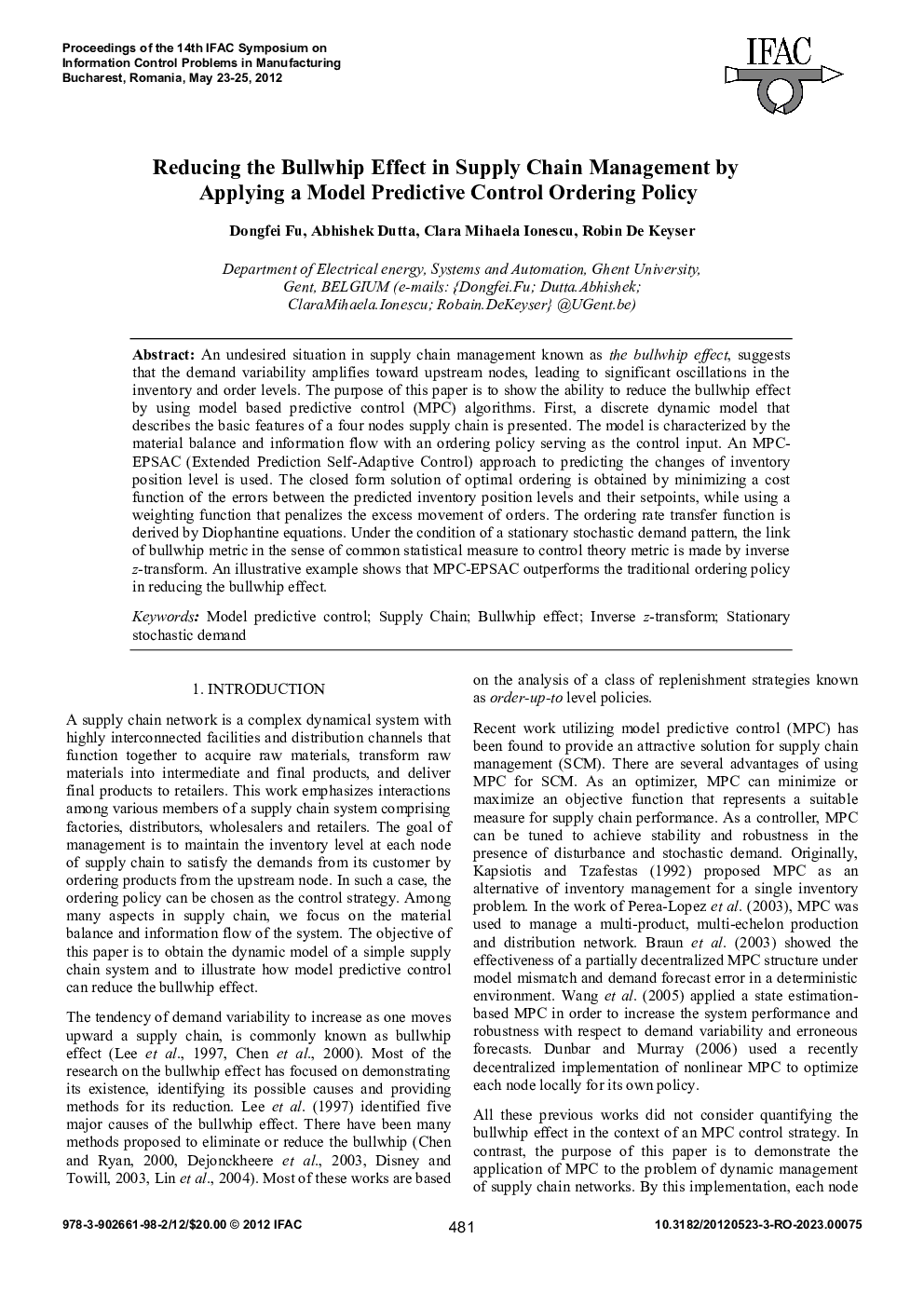| کد مقاله | کد نشریه | سال انتشار | مقاله انگلیسی | نسخه تمام متن |
|---|---|---|---|---|
| 709832 | 892088 | 2012 | 6 صفحه PDF | دانلود رایگان |

An undesired situation in supply chain management known as the bullwhip effect, suggests that the demand variability amplifies toward upstream nodes, leading to significant oscillations in the inventory and order levels. The purpose of this paper is to show the ability to reduce the bullwhip effect by using model based predictive control (MPC) algorithms. First, a discrete dynamic model that describes the basic features of a four nodes supply chain is presented. The model is characterized by the material balance and information flow with an ordering policy serving as the control input. An MPC-EPSAC (Extended Prediction Self-Adaptive Control) approach to predicting the changes of inventory position level is used. The closed form solution of optimal ordering is obtained by minimizing a cost function of the errors between the predicted inventory position levels and their setpoints, while using a weighting function that penalizes the excess movement of orders. The ordering rate transfer function is derived by Diophantine equations. Under the condition of a stationary stochastic demand pattern, the link of bullwhip metric in the sense of common statistical measure to control theory metric is made by inverse z-transform. An illustrative example shows that MPC-EPSAC outperforms the traditional ordering policy in reducing the bullwhip effect.
Journal: IFAC Proceedings Volumes - Volume 45, Issue 6, 23–25 May 2012, Pages 481-486